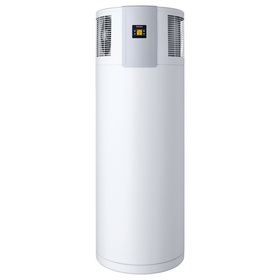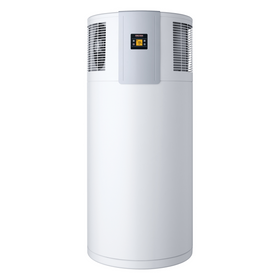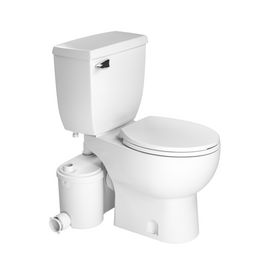
P.A.T.H. Prefab Homes - Prefabricated, Net-Zero, and Sustainable
Last Updated: Feb 20, 2025Prefab, net-zero, and sustainable: all describe the houses of our future. A series of Prefabricated Accessible Technological Homes (P.A.T.H.) has been developed by globally renowned French creator Philippe Starck in collaboration with the Slovenian building company Riko. This line of prefabricated homes utilizes Starck’s design expertise to seamlessly integrate a range of more sustainable technologies, so homes produce more energy than they consume.
Philippe Starck is well-known for his prolific work across all domains, from everyday products (furniture, perfume, smartphone, electric bike), to architecture(hotels, restaurants) and naval and spatial engineering (mega yachts, habitation module for private space tourism). He’s also the central figure behind the concept of democratic design, the idea that, according to Starck, “aims to increase quality in every respect—cultural, qualitative, technological—to lower the price and to share it with as many people as possible.”In 1992, he conceived the idea of a prefab kit house with Les 3 Suisses, a mail-to-order French company. The idea was a bit ahead of its time to be commercially successful. Still, the idea of developing a high-tech adjustable prefabricated house remained with Starck for the next 15 years.
After years of research, the official collaboration between Philippe Starck and Riko, one of the leading European manufacturers of prefabricated wooden buildings, began in 2009. Starck had long sought a partner to develop his vision of an industrial, reliable, and intelligent living solution for current and future generations. “P.A.T.H. is a reliable and intelligent solution for us, our children, the children of our children facing the challenges of ecology, economy, and energy,” Starck explains.
Riko is a European leader in sustainable and low-energy wood construction. The company combines modern technologies with a centuries-long local tradition of wood-crafting. Riko’s experience in sustainable construction systems attracted Philippe Starck, and the idea of P.A.T.H. homes by Starck with Riko began.
Table of Contents
- P.A.T.H. - Ways to Sustainable Design
- Innovative Technologies in P.A.T.H. Prefabricated Homes
- P.A.T.H. Home Options

What is Starck's philosophy? He told Rise, "With P.A.T.H., I wanted to provide the community with the best product in terms of quality, technology, and durability. We decided with Riko to work with wood because we think it is one of the most respectful of the environment's existing raw materials, as it produces no emissions. Also, building your own house can be extremely risky: we know when it starts, but not necessarily when it ends or how much it will cost. With P.A.T.H. and thanks to the industrial production of prefabricated components, in 6 months and for a defined budget, anyone can access a home."
P.A.T.H. - Ways to Sustainable Design
Katarina Kumelj is the project manager for P.A.T.H. by Starck with Riko and is responsible for making this sustainable housing option more widely available to the North American market. "When developing P.A.T.H. by Starck with Riko," she explains, "we focused on the following key issues: inventing an intelligent and timeless design which would provide maximum comfort of living for its users; selecting high-quality and sustainable construction materials; the use of efficient production and building processes; and finally, the integration of renewable energy sources and turn-key solutions that would result in an energy-efficient and comfortable day-to-day life."
The decision to build P.A.T.H. as a prefab was a conscious decision. "Construction has been placing an increasing burden on the social and natural environment for too long, through the growing issues of resource and energy consumption, greenhouse gas emissions, and waste generation, among other issues," Kumelj says.
In the face of these challenges, Philippe Starck and Riko shared the same desire. They recognized the same responsibility in taking on an active role to develop a unique living solution. The designers sought to incorporate advanced sustainable construction in the home, including high-quality and environmentally friendly construction materials. For P.A.T.H., that means wood: a natural, renewable, and recyclable material with an extremely clean and energy-saving lifecycle.
"We have chosen wood as P.A.T.H.'s main building material, as wood is the only natural, renewable, and recyclable building material that has an extremely clean and energy-saving lifecycle," Kumelj says. "Thanks to the ability of a tree to trap large amounts of CO2 and store it in the form of wood (one tree can hold from 10 to 25 tons of carbon in its lifetime), wood has a very low carbon footprint compared to other materials.
Innovative Technologies in P.A.T.H. Prefabricated Homes
Every P.A.T.H. model utilizes renewable energy sources for heating, cooling, and ventilation. P.A.T.H. homes come renewable-energy ready to install solar panels, heat pumps, wind turbines, rainwater collector systems, and other essential elements of sustainable design. "By combining the right equipment to best suit the client's energy efficiency requirements," Kumelj says, "Riko's experts can help each client to choose the right package to ensure proper energy conservation and responsible resource use." The goal is to transform the P.A.T.H. home into a zero-energy or even positive-energy home.
While solar panels are still more common than wind turbines as a source of residential renewable energy, Philippe Starck developed in 2008 the "Revolutionair," a line of micro wind turbines in collaboration with Italian company PRAMAC. These micro wind turbines are highly efficient in domestic applications and especially suitable for urban area installations. They operate independently of wind direction and are incredibly silent in every wind speed condition.
The Speetbox by Starck is another customizable and environmentally friendly heating option Starck developed and is routinely incorporated in P.A.T.H. homes. This airtight wood stove achieves an impressive 79% energy efficiency and is fitted with a steel hearth offering rated power of 5.5 kW. The stove can also include a box filled with stones that acts as a thermal mass to accumulate heat during the heating phase, which is diffused over 24 hours once the stove has been turned off.
P.A.T.H. Home Options
In a P.A.T.H. prefab with a wood shell, Kumelj says, "the main load-bearing structure is made of FSC certified wood-frame exterior, and the interior walls are filled with cellulose thermal insulation." The home incorporates floor-to-ceiling glass windows and doors. The exterior wall panels can be clad in different materials, including rendered, laminated panels, composite cement, or ceramic, making the exterior of P.A.T.H. diverse and dynamic. "The all-wood shell is suitable for those who would like to increase the energy efficiency and insulation properties of their shell even further, as the thickness of the frame and…the insulation can be adapted to fit the most stringent low-energy or even Passive house standards," Kumelj says.

P.A.T.H.’s glass shell, supported by a high-quality steel frame, “incorporates an elegant and highly efficient floor-to-ceiling aluminum-glass façade by high-quality German window manufacturer Schüco,” Kumelj says, to bring abundant natural light, while keeping thermal losses to a minimum. Triple pane glass filled with krypton and argon gas ensures the thermal transmittance factor of glass (Ug) to be as low as 0.5 W/m2K. Integrated electrically operated Venetian blinds further reduce thermal losses while providing privacy when needed. “The transparent façade creates a luminous and comfortable living space, while seamlessly merging the home’s interior with the exterior surroundings,” Kumelj says.
The Starck with Riko website has an easy-to-use house configurator, which allows you to configure your design from 34 different models. The various options will enable the homeowner to choose the floor plan (one or two stories, number of bedrooms and bathrooms, parking spots) and the structure type (wood, glass, or a combination of wood and glass). Next, you get to choose from among four roof types: cornice, flat, double-pitched, or double-pitched with cantilever.

Several P.A.T.H. models combine an all-glass façade at the living room area with fully insulated timber-frame panels in the bedrooms and bathrooms. It is also the mid-range price option between the wood and glass structures. While the website only shows the prices in Euros per square meter, here’s the translation into USD per square foot, at today’s exchange rate:
Wood
Cornice: $269.42
Flat Roof: $241.55
Double Pitch Roof: $241.55
Double Pitch Roof with Cantilever: $250.84
Combined
Cornice: $288
Flat Roof: $260.13
Double Pitch Roof: $260.13
Double Pitch Roof with Cantilever: $269.42
Glass
Cornice: $418.06
Flat Roof: $371.61
Double Pitch Roof: $371.61
Double Pitch Roof with Cantilever: $380.90
Home Advisor reports that the average cost per square foot to build a home comes in around $150 per square foot—quite a bit less than the P.A.T.H. homes. So is it worth it? Julien Selz thinks so. Selz recently toured one of the P.A.T.H. models and is discussing with Riko to build the home (in France). “We first searched the Internet for our future home based on criteria related to ecology and innovation in housing,” Selz says. “Quite quickly, we came across photos of the P.A.T.H. by Starck with Riko homes. We were won over by the innovative design and concept.”

Selz and his family were intrigued by the all-glass and mixed-shell options. “When you walk in the house, you are quickly seduced by this vision of continuity and synthesis between the interior habitat and the external environment,” he says. “Finally, our choice was for a mixed P.A.T.H. home shell for the elegance and balance of glass and wood. The P.A.T.H. home is more than an architectural adventure, unique in its design and efficient in its undeniable technological characteristics,” enthuses Selz. “It is a mindset, a lifestyle, with a strong sense of belonging to a greater and timeless environment infused with a positive idea of living together.”
Shop All Special Offers
Shop Special Offers on vetted Home Improvement products at low prices while supplies last.

Stiebel Eltron Accelera 300 E Heat Pump Water Heater
Stiebel Eltron
Out of Stock

Victory Range Hoods Sunset 600 CFM White Flush Ceiling Mount Dimmable LED Range Hood
Victory Range Hoods
In Stock

Victory Range Hoods Sunset 600 CFM Flush Ceiling Mount Dimmable LED Range Hood
Victory Range Hoods
In Stock

Stiebel Eltron Accelera 220 E Heat Pump Water Heater
Stiebel Eltron
In Stock

Quickscrews Cabinet Install Screws
Quickscrews
In Stock

Victory Range Hoods Horizon Matte White Flush Ceiling Mount Range Hood with Dimmable LED Lights
Victory Range Hoods
In Stock

Saniflo Sanibest Pro Combo Macerator System
Saniflo
In Stock

Blanco PRECIS Super Single Undermount SILGRANIT Kitchen Sink
Blanco
In Stock
9 Colors

Blanco PRECIS 30 Undermount Single Bowl SILGRANIT Kitchen Sink
Blanco
In Stock
9 Colors

Hauslane Chef 36" UC-PS18 860 CFM Ducted Undercabinet Range Hood
Hauslane
In Stock
2 Colors

As renewable energies and smart home technologies continue to advance, home construction will also need to evolve to integrate these technological advances. Making houses Net Zero ready is one way to “future-proof” a home. P.A.T.H. homes are ready to offer a solution. Living sustainably, Selz says, is “above all an aspiration and a commitment to adopting a very modern vision of oneself at one with the world in which we live.”
Tobias Roberts
Tobias runs an agroecology farm and a natural building collective in the mountains of El Salvador. He specializes in earthen construction methods and uses permaculture design methods to integrate structures into the sustainability of the landscape.
